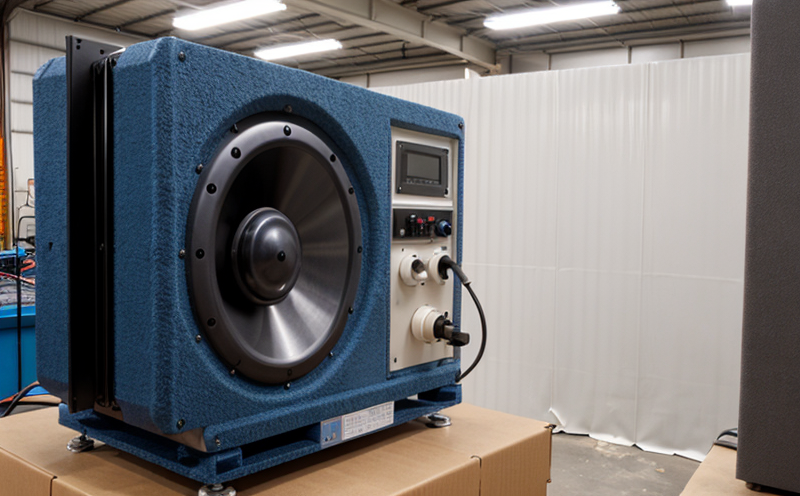ISO 11204 Air Purifier Noise Measurement
The ISO 11204 standard provides a comprehensive framework for measuring and evaluating the noise generated by air purifiers. This service ensures that products meet stringent acoustic performance requirements, thereby enhancing user comfort and satisfaction. Compliance with this international standard is crucial for manufacturers aiming to reduce noise pollution and ensure their products align with regulatory guidelines.
The measurement process involves several critical steps. First, the testing environment must be controlled to minimize external noise interference. This typically requires a sound-attenuating chamber that isolates the test specimen from ambient noise. Secondly, precise instruments such as sound level meters and microphones are employed to capture accurate sound pressure levels at various frequencies.
The ISO 11204 standard specifies not only the measurement techniques but also the acceptable limits for noise emissions. These limits are designed to ensure that air purifiers do not exceed a specified decibel (dB) level, which is critical in maintaining indoor comfort and reducing health risks associated with prolonged exposure to high noise levels.
For manufacturers, compliance with ISO 11204 can significantly enhance brand reputation by demonstrating commitment to product quality and consumer well-being. This service not only ensures regulatory compliance but also supports continuous improvement efforts within R&D departments to innovate quieter, more efficient air purification solutions.
The process of measuring noise in accordance with ISO 11204 involves multiple stages: initial setup, calibration of equipment, placement of the air purifier in the test chamber, and subsequent measurements at various operational settings. The data collected is then analyzed to determine compliance with the specified limits. This detailed approach ensures that manufacturers have reliable evidence of product performance, which can be used for marketing purposes or internal quality control.
Compliance with ISO 11204 is particularly important in sectors like healthcare and residential environments where noise levels directly impact user experience and health outcomes. In these settings, even minor reductions in noise can lead to significant improvements in patient comfort and overall well-being.
| Parameter | Description |
|---|---|
| Noise Level | The sound pressure level measured in decibels (dB) at specific frequencies. |
| Frequency Range | The range of frequencies over which the noise is measured, typically from 10 Hz to 20 kHz. |
| Test Conditions | The operational settings under which the air purifier is tested, including fan speed and filter type. |
| Measurement Points | The locations within the chamber where noise levels are measured. |
Why It Matters
Noise pollution is a significant concern in modern living and working environments. Excessive noise can lead to stress, sleep disturbances, and even hearing damage over prolonged periods. Air purifiers are essential household appliances that improve indoor air quality, but they must not contribute to the overall noise level of the environment.
By adhering to ISO 11204, manufacturers ensure that their products do not compromise on sound quality while still delivering superior air filtration. This dual benefit is particularly important in settings such as hospitals, schools, and homes where quiet environments are crucial for maintaining a healthy atmosphere.
The service provided here ensures that air purifiers meet stringent acoustic performance standards, thereby enhancing user satisfaction and trust in the brand. Compliance with this standard also opens up market opportunities by meeting regulatory requirements and international benchmarks.
Applied Standards
- ISO 11204: Acoustics — Determination of sound power emitted by air purifiers
- ASTM E378-15: Standard Practice for Measurement and Calculation of Noise Emission from Air Purifiers
- EN ISO 16890: Ventilation equipment and air cleaning devices — Determination of sound power level emitted by air purifiers
The application of these standards ensures that the testing process is consistent and reliable, providing credible data for manufacturers. Compliance with these international guidelines not only enhances product quality but also supports global market entry and compliance with local regulations.
Use Cases and Application Examples
- Homes: Ensuring that air purifiers in residential settings do not contribute to noise pollution, thereby enhancing the overall comfort of occupants.
- Hospitals: Maintaining a quiet environment for patients and staff, which is crucial for recovery and productivity.
- Offices: Providing a comfortable working environment by reducing ambient noise levels while improving air quality.
The ISO 11204 service can be particularly beneficial in these settings where both air quality and acoustic comfort are paramount. By measuring the noise generated by air purifiers, this service ensures that they meet international standards, thereby supporting a healthier indoor environment for all users.





